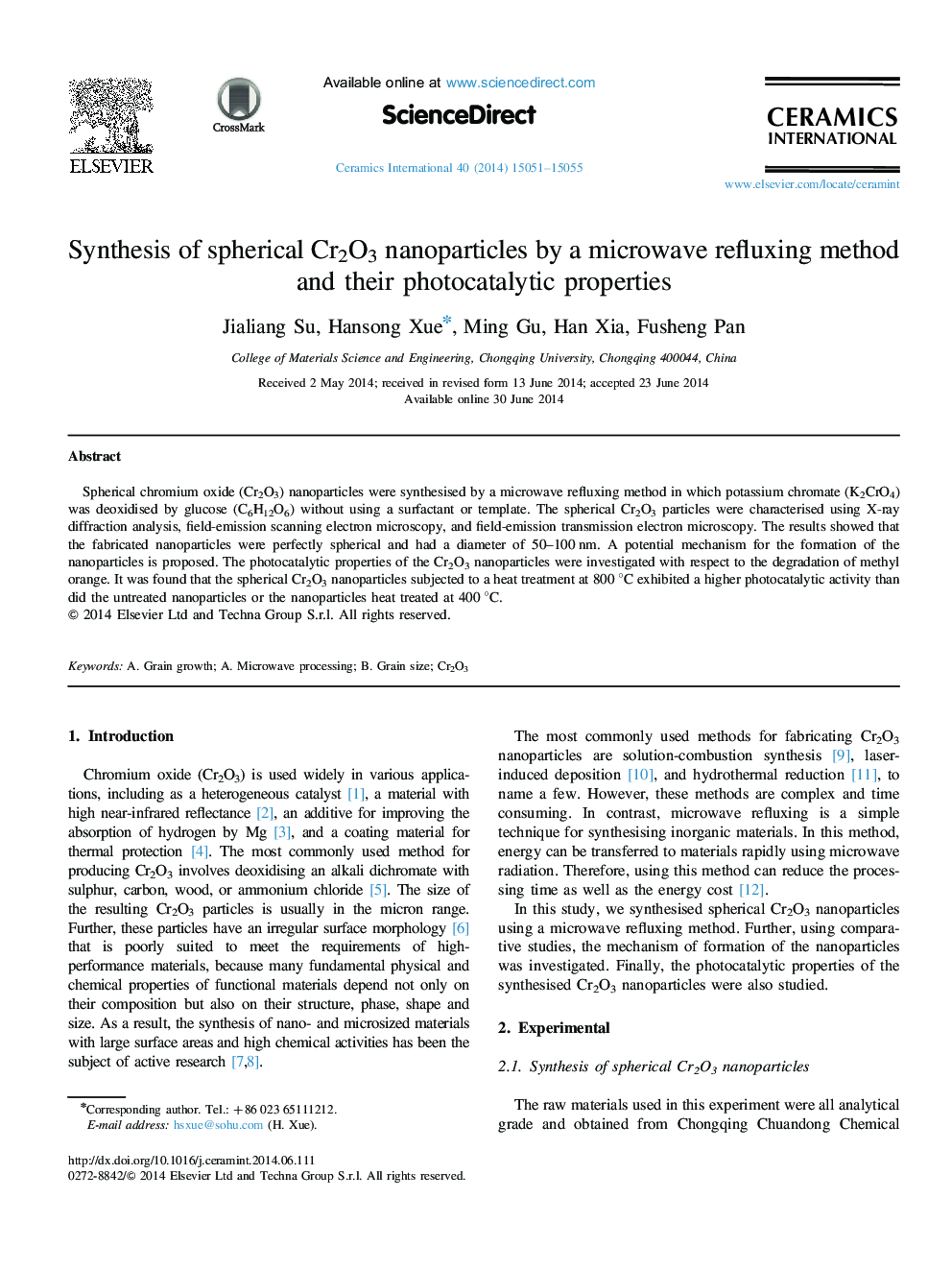| Article ID | Journal | Published Year | Pages | File Type |
|---|---|---|---|---|
| 1461253 | Ceramics International | 2014 | 5 Pages |
Spherical chromium oxide (Cr2O3) nanoparticles were synthesised by a microwave refluxing method in which potassium chromate (K2CrO4) was deoxidised by glucose (C6H12O6) without using a surfactant or template. The spherical Cr2O3 particles were characterised using X-ray diffraction analysis, field-emission scanning electron microscopy, and field-emission transmission electron microscopy. The results showed that the fabricated nanoparticles were perfectly spherical and had a diameter of 50–100 nm. A potential mechanism for the formation of the nanoparticles is proposed. The photocatalytic properties of the Cr2O3 nanoparticles were investigated with respect to the degradation of methyl orange. It was found that the spherical Cr2O3 nanoparticles subjected to a heat treatment at 800 °C exhibited a higher photocatalytic activity than did the untreated nanoparticles or the nanoparticles heat treated at 400 °C.
